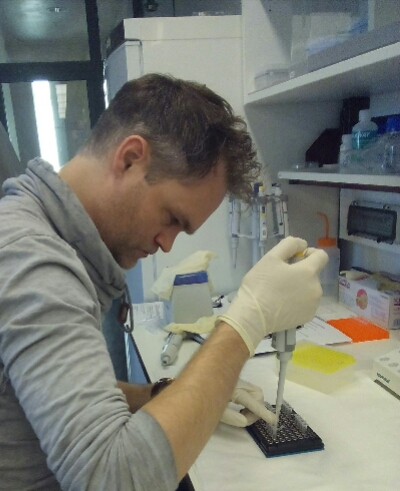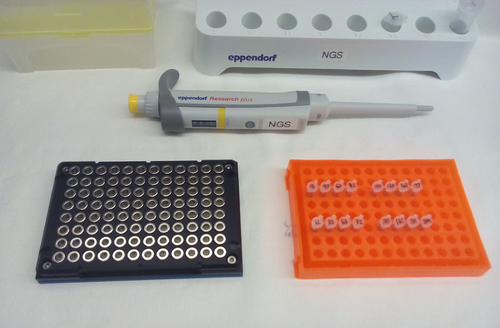 Over the last couple of decades, the global syrphid community has been progressing towards a focused picture of the origin and diversification of hoverflies (Diptera: Syrphidae). Given the growing concerns about climate change and biodiversity loss, this work, along with revising the taxonomy of hoverflies, is extremely important. Syrphids are also critical pollinators of flower plants and crops underscoring their value. In recent years multi-phase projects were developed to take advantage of new Target Enrichment techniques in hopes of generating high-confidence molecular data that would cement subfamily relationships (with particular focus on the subfamily Syrphinae) and shed light on some genera within the Syrphidae.
Over the last couple of decades, the global syrphid community has been progressing towards a focused picture of the origin and diversification of hoverflies (Diptera: Syrphidae). Given the growing concerns about climate change and biodiversity loss, this work, along with revising the taxonomy of hoverflies, is extremely important. Syrphids are also critical pollinators of flower plants and crops underscoring their value. In recent years multi-phase projects were developed to take advantage of new Target Enrichment techniques in hopes of generating high-confidence molecular data that would cement subfamily relationships (with particular focus on the subfamily Syrphinae) and shed light on some genera within the Syrphidae.My BIG4 project’s main focus is to develop baits to target informative genes of Syrphidae. This undertaking required a large scale global collaboration with scientists and syrphid workers from multiple labs, collections, and museums from several nations. Some of the wet lab work was divided among several labs including the Canadian National Collection of Insects, Arachnids and Nematodes (CNC), Ottawa, Canada; The Royal Museum for Central Africa (RMCA), Tervuren, Belgium, and the target enrichment wet lab was completed at the Alexander Koenig Research Museum (ZFMK), Bonn, Germany. 192 syrphid species were selected and targeted using a bait kit designed specifically for Syrphidae from a Transcriptome library provided by the 1Kite project (Bonn, Germany). This process was rather tedious and took roughly 3 months to complete, including the receival of raw sequences.
This is where the real fun began. When processing raw sequences at this scale, serious bioinformatic background is paramount. The pipeline has been developed and reshaped many times, as new challenges arise. There is a lot of stop-start, stop-start, two steps forward and five steps back. This can feel very defeating and frustrating, but our goal propels us and thankfully there is no shortage of support in the community. Our efforts have yielded roughly 1300 genes across all taxa targeted (this will constitute the largest data set ever developed for Syphidae)!

Magnetic plate used in purification
We are now in the stages of aligning COI sequences to collate with our genomic data. Our aim is to generate large matrices to produce phylogenetic trees to better understand the relationships of the genera within the subfamilies of Syrphidae.
Overall, working on this project within the larger scope of the BIG4 has shown me the benefit and pitfalls of collaboration. A project of this scale simply cannot be undertaken or completed without community input, especially given the wide variety of expertise from many disciplines required (collections, private collectors, bioinformatics, technical lab expertise, etc.).
After all the work is behind us and we are able to look plainly at our raw sequences, gain a good alignment, establish a section of our pipeline, and begin to make out the ghost of a result, it’s a great feeling!
Publications within Trevor's project:
- Burt, T.O. & Mengual, X. 2017. Origin and diversification of hoverflies: a revision of the genera Asarkina and Allobaccha – A BIG4 Consortium PhD project. Research ideas and Outcomes 3: 1-16.
- Pauli, T. Burt, T.O., Meusemann, K., Bayless, K., Donath, A., Podsiadlowski, L., Mayer, C., Kozlov, Vasilikopoulos, A., Liu, S., Zhou, X., Yeates, D., Misof, B., Peters, R.S. and Mengual, X. 2018. New data, same story: Phylogenomics does not support Syrphoidea (Diptera: Syrphidae, Pipunculidae). Systematic Entomology 43: 447-459.
- Burt, T.O. & Mengual, X. 2018. New records of Melanostoma fumivenosum Doesburg (Diptera: Syrphidae) with the description of the male. Australian Entomologist 45: 209-216.

